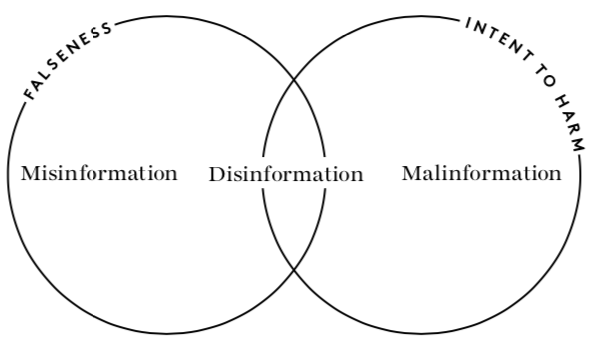



YOUR RESPONSIBILITY AS A CULTURAL PRODUCER
As artists, makers, and scholars, we can easily think of oursevles as cultural producers as we create and share new work. However, thanks to technology, everyone can be a cultural producer as well as a consumer. Anytime you cite someone's work, re-share information on social media, or create new content you are producing information for others. Therefore, it is vital that you evaluate your resources to be a responsible cultural producer who avoids spreading mis/dis/malinformation, and to make sure you are contextualizing information appropriately.
WHAT IS MIS / DIS / MALINFORMATION?
Sometimes the terms are used interchangeably, but are three distinct categories:

These definitions are sourced from page 2 of The Psychology of Fake News: Accepting, Sharing, and Correcting Misinformation (2021) - an Open Access eBook you can read anytime! The image is sourced from: Understanding Information Disorder (2020)
SELF-GUIDED TRAINING
Use the pages on the left to discover strategies and tips for improving your information evaluation skills!
If you want to dive deeper into topics like news literacy, algorithmic literacy, lateral reading, and more, we highly recommend using this resource: